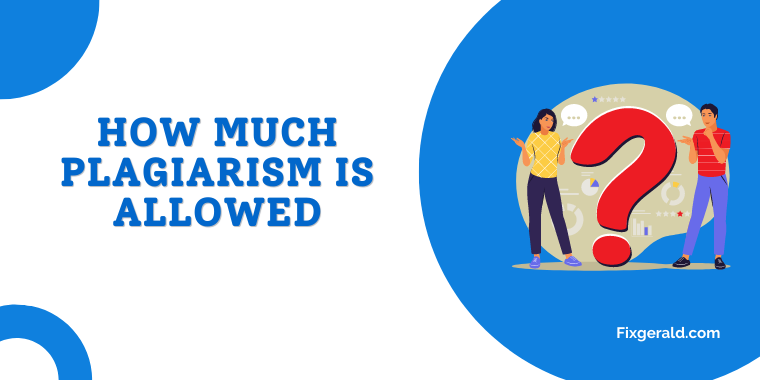Learn How Much Plagiarism is Allowed in 2024
Table of contents

Read our short article to find out how much plagiarism is allowed in academic work before it gets you in trouble!
What is Plagiarism?
Plagiarism is taking someone else’s work and claiming it to be yours. So, it is essentially cheating. However, it’s often critical to back up your thoughts and opinions in academic writing, especially when you are specifically asked to perform research e.g., a research paper, a case study, a thesis, dissertation, or general research essay, but you must be careful how you write text to avoid getting in trouble for cheating. Students may take information from books, online documents, a friend, or another student if they reference the other’s work accurately. A student may plagiarize intentionally or unintentionally e.g., students can be accused of plagiarism for forgetting to or being unable to correctly cite sources of information and students can (in extreme cases) be thrown off their course.
How Much Plagiarism is Allowed?
Plagiarism in General Academic Writing
A plagiarism checker is used in academic writing to detect plagiarism and although educational professionals may tell a student that the allowed percentage is zero, the maximum amount of plagiarism that academic institutions generally consider acceptable in submissions is actually 15%. Academic institutions interpret the 15% statistic as unintentional plagiarism, and there is also a small percentage allowance for software faults, which can occur with such complicated and detailed technology. So, a plagiarism score of over 15% indicates that the student’s work contains a significant amount of plagiarized material and that 1% more can be the difference between academic integrity and plagiarism. Worryingly, a plagiarism percentage of more than 20% is an immediate perceived indicator that text is intentionally plagiarized by the student to deceive their academic instructor or assessor and a penalty may be applied.
Plagiarism in Theses and Dissertations
When it comes to theses and dissertations, plagiarism is constantly monitored and should ideally be zero but 5% or under will normally be accepted. You may find yourself creating sentences that sound similar to those seen in other academic papers, which your teacher or lecturer may overlook, but if this happens too often you may face a penalty.
Plagiarism in Published Journals
In a published journal, plagiarism should again be zero and score of over 5% would possibly be unacceptable (just like theses and dissertations) but in the case of a published journal, legal action can be taken against plagiarized content.
Plagiarism in Blogs
Blog writing is a little more relaxed and a score of 30 percent or under will generally be considered acceptable.
Top Tips on How to Avoid Plagiarism
- Cite properly: A good student knows how to cite according to their educational establishments required citation style. Work may be cited in Harvard, APA, MLA, Chicago, Turabian, or another style and these can have different versions e.g., APA 6th, MLA 8th. Make sure you give in-text citations, e.g., Shelley, 2012 for every quote, fact, statistic, graph, diagram, photo, etc., that you take from another source and reference the source fully in your reference list e.g., Shelly (2012) The Meaning of Life, Blackbird Publications. Remember that direct quotes should normally be written within speech marks and paraphrased text counts as a quotation requiring citation, but you can omit the speech marks.
- Use a generator: An online citation generator can help you check you are citing work correctly and save your references as you go if you keep them open in a tab and update them each time you use a new source, but they are not completely foolproof or 100 percent accurate all the time, so be sure to double check them.
- Highlight copied text: If you copy and paste information into a document to paraphrase or refer to later, highlight the text in a distinct color (e.g., red for danger) until you have written it in your own words and cited it. This will remind you that it is copied content. It can be easy to forget and include the words of others in your work, especially when you are writing a large document.
- Proofread: Read your whole document beginning to end to check that you have included in-text citations and a reference list entry for every piece of information you have used from another source and that speech marks surround any direct quotes.
- Detection tools: If you are worried your work could still show a result of more than 15%, try using an online plagiarism detection tool before submitting any work. This can provide you with an estimate of the plagiarism score and identify the plagiarized content for you to edit.
Plagiarism in academic writing or any kind of writing can be a tricky area and it’s so easy to get caught out whether you intended to cheat or not! Students can get lost in large documents, lose track of what they have written, what they have copied and pasted, and where text, quotes, statistics, and other information came from. Plagiarism accusations are best avoided so be sure to cite other people’s work correctly and accurately as you go along and find out exactly how much plagiarism is allowed in college, rather than take risks that may be embarrassing or (more worryingly) could potentially cost you penalties or your college place.





